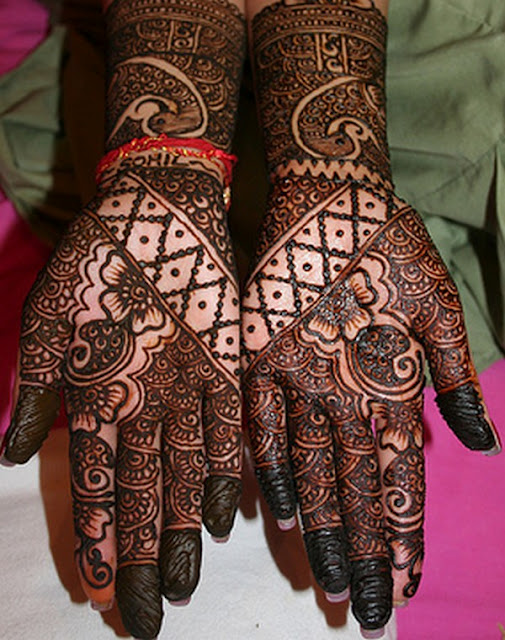Henna Mehndi Design Biogarphy Photos Pictures Pics Images
Source(google.com.pk)
...a short history of henna. There is very persuasive evidence that henna was used by the Neolithic people in Catal Huyuk, in the 7th millennium BCE to ornament their hands in connection with their fertility goddess. The religion these people practiced was the predecessor to the religions of all the people in the ancient Middle East, and henna seems to have been used by all of these people as part of their adornment and belief system. The earliest civilizations that can be proved to have used henna include the Babylonians, Assyrians, Sumerians, Semites, Ugaritics and Canaanites. The earliest written artifact that mentions henna being used specifically as an adornment for a bride or woman's special occasion is in the Ugaritic legend of Baal and Anath, inscribed on a tablet from about 2100 BCE, from north west Syria. Anath was a goddess of fertility and battle. In the legend, she adorned her hands with henna before battle, and brides ornamented their hands with henna as a preparation for wedding. As henna is mentioned as a part of a legend, may be inferred that henna was in use by the Ugaritic people, as a bridal tradition, and as a women's celebratory cosmetic along the eastern coast of the Mediterranean for many centuries prior to 2000 BCE. There are many statuettes from Crete and Mycenae from the period 1700 BCE to 900 BCE that show goddesses synchronous with Anath, with raised hands that appear to be ornamented with henna. Several of these goddesses also have facial patterns that are identical with scarification that was used to honor the goddess Anath, and identical to patterns are made in harquus (a cosmetic closely related to henna) have been used until the present time by Arabs, Bedouins and North African tribal groups. There are numerous artifacts from Iraq, Palestine, Greece, Egypt, Crete and Rome from 1400 BCE to 1AD that show women with henna patterns on their hands. The early center of the use of henna as a woman's adornment seems to have been the eastern Mediterranean, where it grows wild. It is mentioned in the Bible as "Camphire" in the Song of Solomon, and was used by the Canaanite women in pre-biblical times. A Roman wall fresco, "The Aldobrandini Wedding" from 30 BCE, shows a scene identical with a "Night of the Henna" celebration, in which the Mother has henna patterns on her hand. The Canaanites spread their traditions, including the use of henna, across North Africa between 1700 and 600 BCE, specifically establishing the Berber traditions of henna in Morocco
Henna Mehndi Design Photos Pictures Pics Images
Henna Mehndi Design Photos Pictures Pics Images
Henna Mehndi Design Photos Pictures Pics Images
Henna Mehndi Design Photos Pictures Pics Images
Henna Mehndi Design Photos Pictures Pics Images
Henna Mehndi Design Photos Pictures Pics Images
Henna Mehndi Design Photos Pictures Pics Images
Henna Mehndi Design Photos Pictures Pics Images








No comments:
Post a Comment